LED display packaging has developed from early-days DIP (dual in-line package) to today’s multiple packaging methods such as SMD, IMD, and COB,. These methods have reshaped the industry.
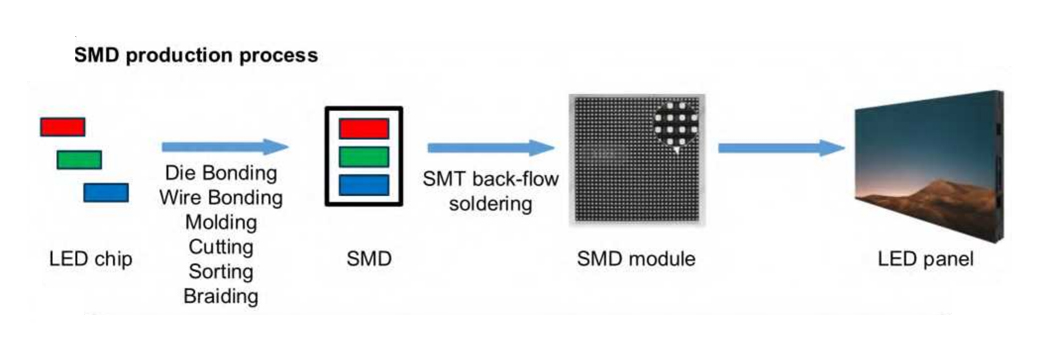
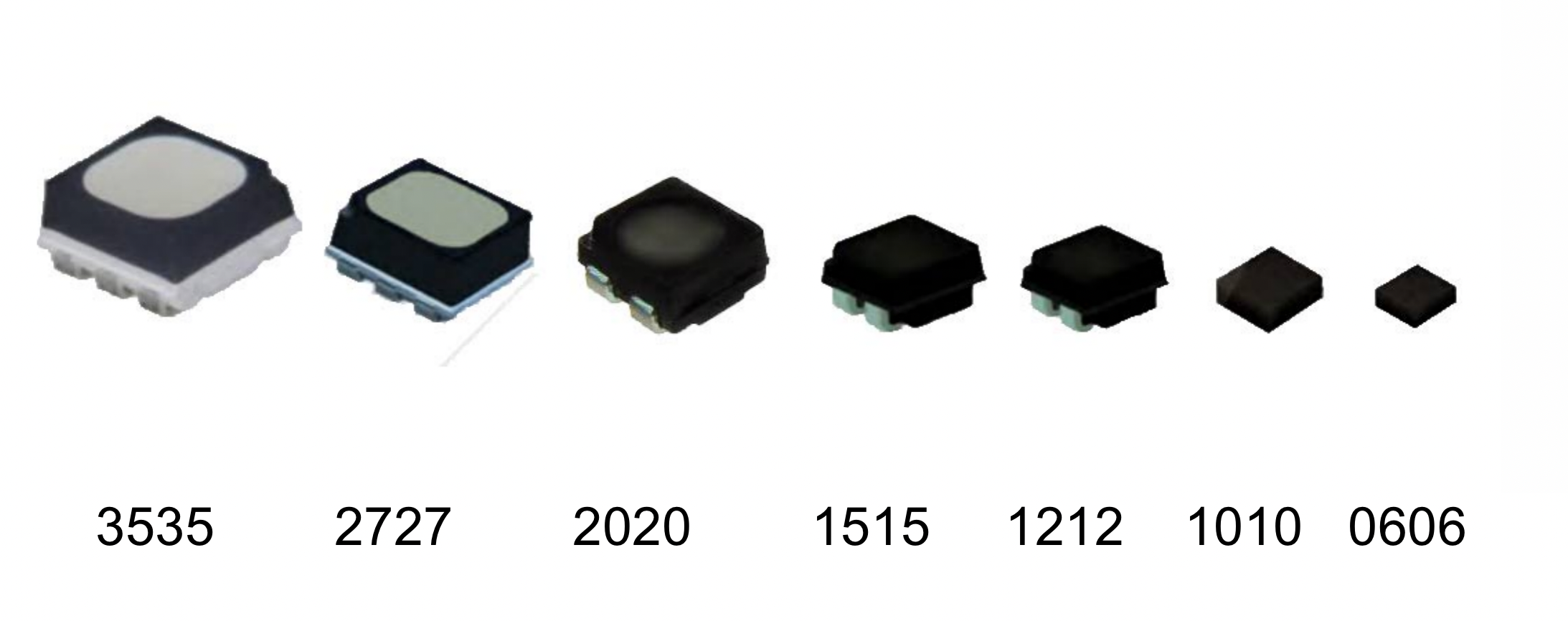
Advantages and disadvantages of SMD :
Introduced in 2001, SMD packaging technology is highly mature for 1mm and above products, whether for indoor or outdoor applications, with almost two decades of development. SMD has a well-established supply chain with complete equipment and experienced production lines for mass production. SMD diodes are highly reliable and easy to repair, and the cost is relatively low compared to other packaging methods.
SMD surfaces are not sealed like COB’s, therefore the level of protection against water, dust, and external force (during transportation and installation) is not as high as expected. This is why fine-pitch LED display installation becomes a white-glove job, requiring delicacy and experience. Some SMD LED displays use a module mask (shader). In high-temperature environments, mask bulging is likely to occur, which will affect viewing. In most cases, the mask surface may turn white or yellow after a period of use, which may also degrade the user experience. Pixel pitch at or below P0.7mm presents physical limitations. Due to the size of SMD packaging and welding wiring layout space on PCB boards, it is challenging for SMD displays to advance to finer pitches.
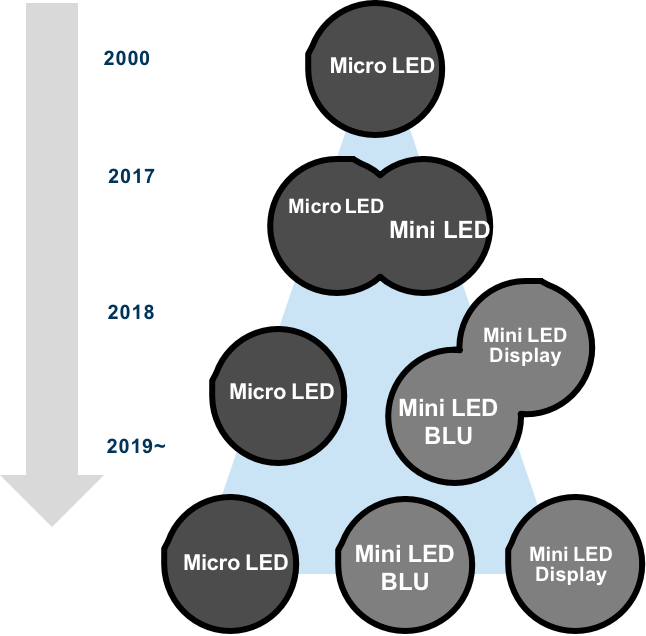
Definition of fine-pitch LED displays
Fine-pitch LED display generally refers to LED displays with pixel pitch at or below 2.5mm. Mainstream fine-pitch LED display products are referred to as P2.5, P1.8, P1.5, P1.2, P0.9, etc. As technology develops and costs lower, direct-view fine-pitch LED displays are being used in an increasing number of applications, including corporate, retail, and educational settings, control rooms, broadcast studios, 3-D, and virtual or augmented reality displays. Compared with traditional larger-pitch LED displays, fine-pitch LED displays to bring higher resolution (full HD, 4K, 8K, and higher) to the application market, allowing an increasingly broader range of creativity. Fine-pitch LED display is a general term for a larger set of systems, consisting of LED display, HD/UHD display control systems, video processing systems, etc. Fine-pitch LED displays to use pixel-level point control technology to achieve a highly detailed level of brightness, color reproduction, and uniformity in every pixel unit. A key production link in the fine-pitch LED display manufacturing process is Automatic Reflow Welding, which helps to improve the reliability of welding and tremendously reduces the pixel failure rate.
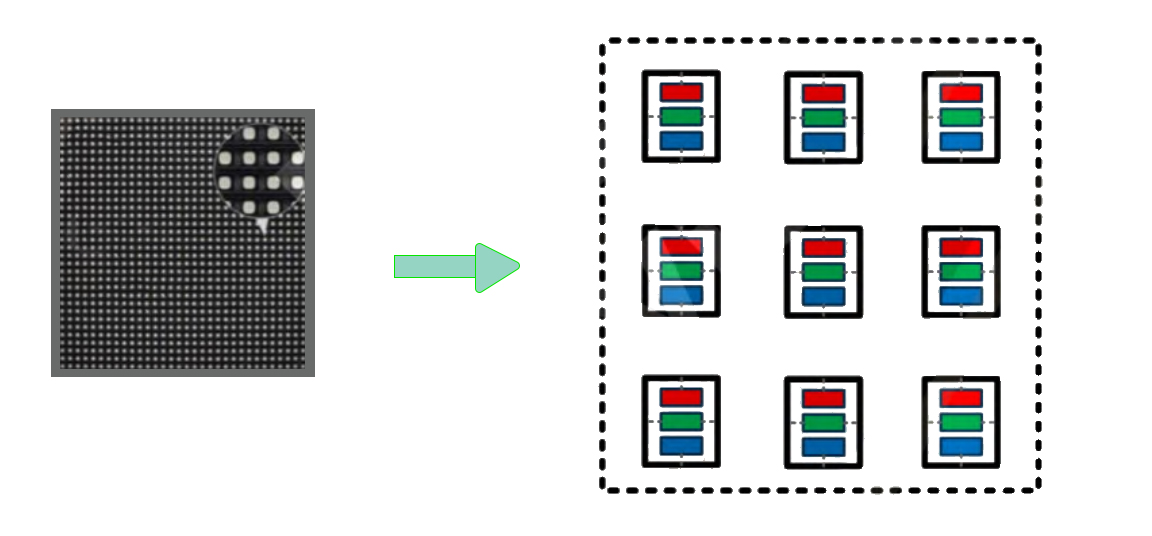
Development history of fine-pitch LED displays
Since LED displays entered the application market, they have developed from single- and dual-color displays to full-color screens, then to fine-pitch. Prior to 1993, LED display screens were limited to red and green dual-color displays and were used in limited applications such as traffic lights and the banking & securities industry. In 1993, Nakamura Shuji invented the blue LED chip, which completed the three primary colors (RGB) and opened a new chapter of full-color displays. In 2001, SMD packaging was introduced, and Chinese LED display manufacturers gradually grew in scale and expanded from domestic to overseas markets. By 2009, European and American enterprises withdrew from the LED display manufacturing market, and Chinese manufacturers became a driving force in the global LED display industry.
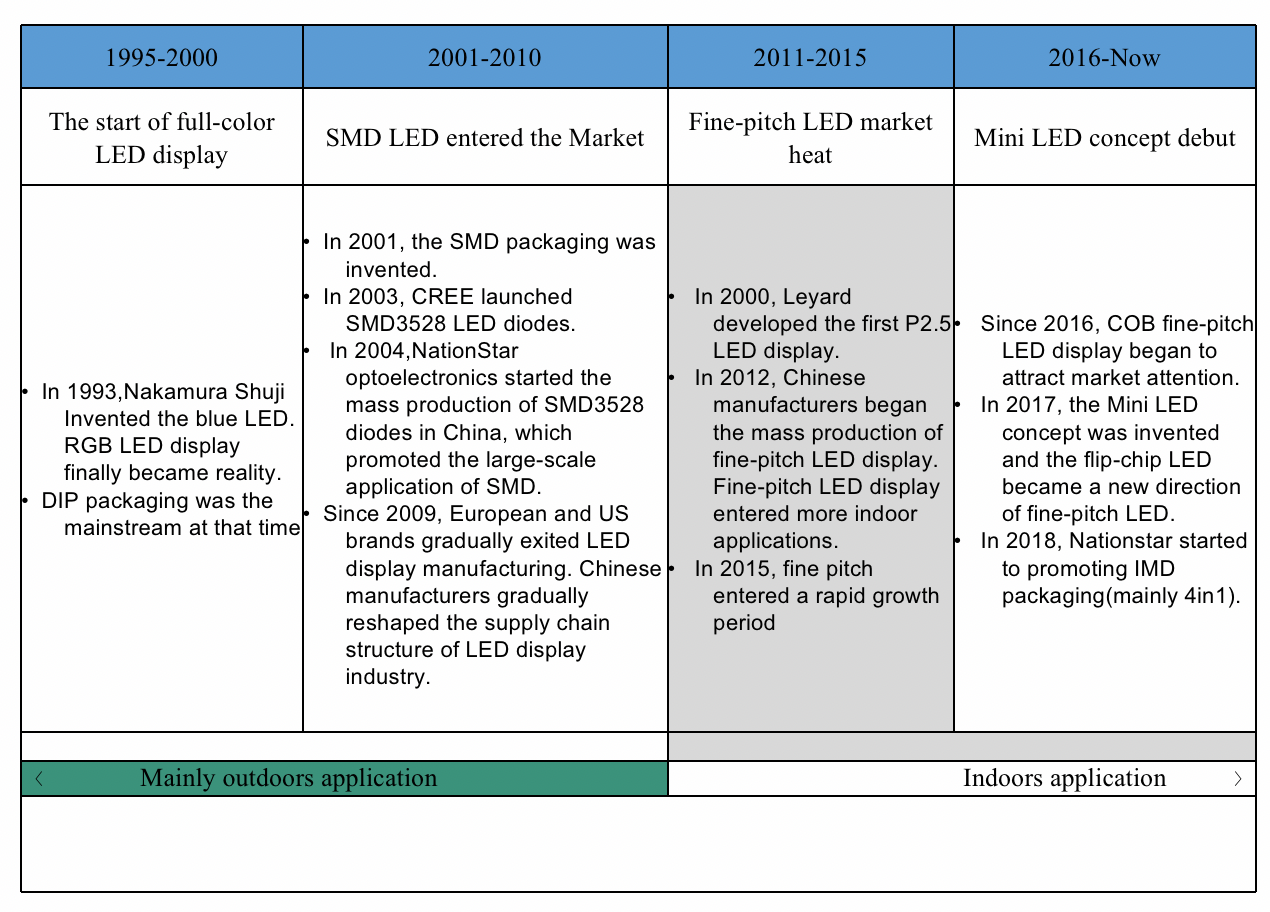
In 2010, with the launch of the first P2.5mm fine-pitch display, the entire industry began a long-term evolution from outdoor to indoor applications, shifting from larger to finer pitches. The following five years witnessed a stunning 3-digit growth rate with fine-pitch products used in more and more applications. In 2015, facing pressure from Chinese LED display manufacturers, whose compound annual growth rate exceeded 100%, manufacturers of traditional rear-projection and LCD equipment, such as Samsung, Panasonic, Planar, NEC, etc, also joined the fine pitch race. In 2016, Sony-made COB products caught market attention, especially after its Crystal Micro-LED screen, based on COB packaging technology, exhibited at CES in 2017. In the same year, the concept of mini-LED was raised and COB packaging further advanced to flip-chip technology. In 2017, IMD (integrated matrix device, also known as N-in-one) technology was introduced by NationStar with its pioneering product, the 4-in-1 IMD0.9, dividing the fine-pitch market into three major product lines: SMD, IMD, and COB.
2020 was expected to be the beginning of the Sub-1 mm Era, with a conservative estimate of 5% of overall fine-pitch sales volume. However, due to the worldwide outbreak of COVID-19, the Sub-1 mm Era may be postponed into 2021 or even 2022.
VISIONPI provides a full range of fine pixel pitch led wall solutions from 0.77 to 2.5mm.Get answers about Pricing, Specifications, Installation, and more.
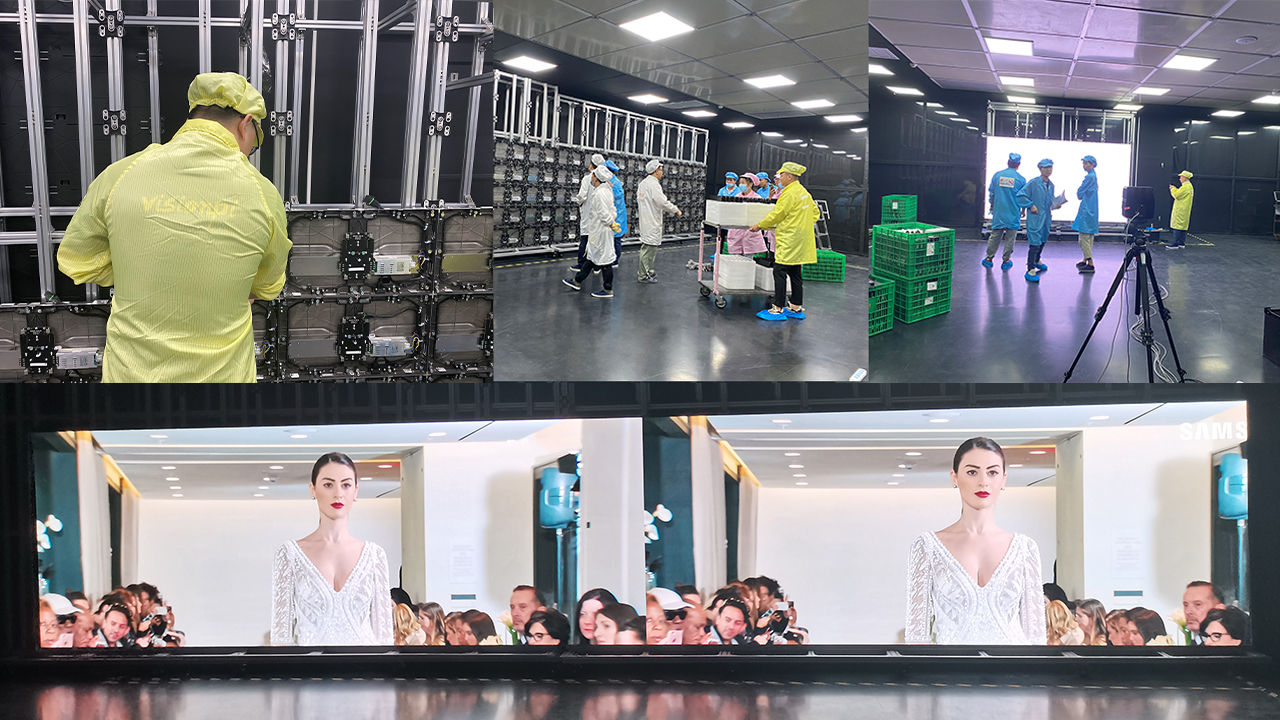
Are you looking for a display option that can provide a 360-degree viewing experience, high-definition images, and high transparency? If so, you might want to consider the cylinder LED screen, also known as the pillar LED screen or the LED column. This is a cylindrical display that can show immersive and dynamic content in various settings. In this article, we will explain what the cylinder LED screen is, how it works, its features, applications, how to choose the best quality, and the benefits of getting one.
What is a Cylinder LED Screen? A cylinder LED screen is a type of LED display that has a cylindrical shape and provides a 360-degree viewing angle. Unlike traditional flat screens, the cylinder LED screen can display content in all directions, making it ideal for applications where a wide viewing range is required. The cylinder LED screen can be customized to different diameters and heights, depending on the needs of the environment.
Earlier, we have mentioned everything about this revolutionary technology. But it’s better to know about the places where you can install these screens to get pros. So, we can place these screens in:
| Hotels | Shopping centers | Exhibition centers |
| Corporate offices | Malls | Airports |
| Universities | LED pillar in bar | Government buildings |
| Meeting halls | Square | And much more |
It is a versatile display option that can be used in various environments, such as hotels, shopping centers, exhibition centers, corporate offices, airports, universities, government buildings, and meeting halls. It has several features that make it stand out from other display options, such as 360-degree viewing angle, high flexibility, easy installation, and high-definition images. It also has several benefits that make it worth getting, such as enhancing brand image, increasing sales and revenue, improving customer satisfaction and loyalty, and saving time and money. If you are looking for a display option that can provide you with these advantages, you should consider getting a cylinder LED screen from a reputable supplier.
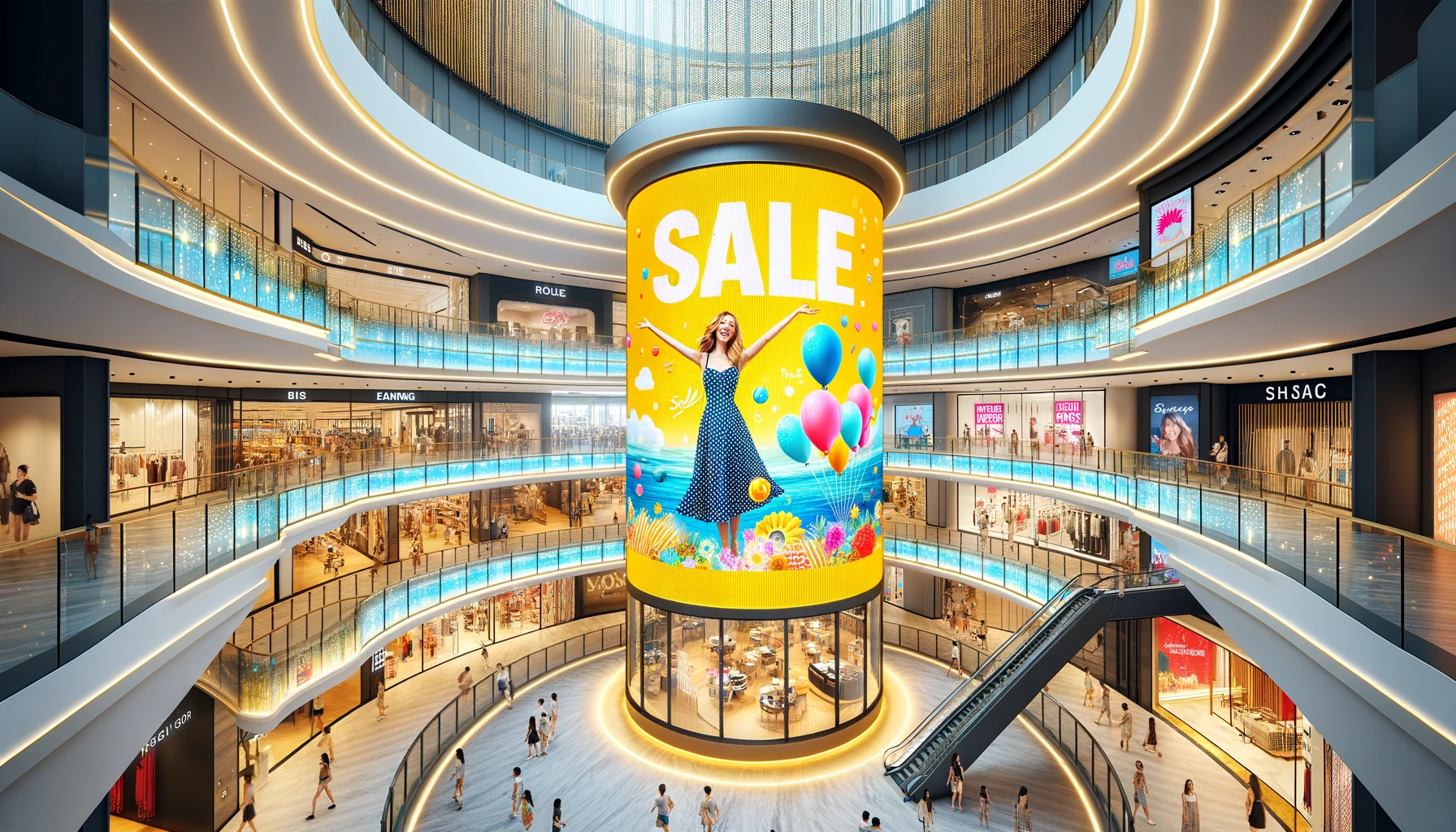
In today’s dynamic display market, cylindrical LED screens are commonly constructed using steel cabinets or merely supported by frames with flexible modules attached via magnets. However, for applications requiring finer pixel pitches below 2mm, the precision in the manufacturing of the cabinet and frame becomes critical. Any minor deviation in dimensions can lead to visible unevenness across the LED screen, compromising the visual integrity and the display’s overall impact.
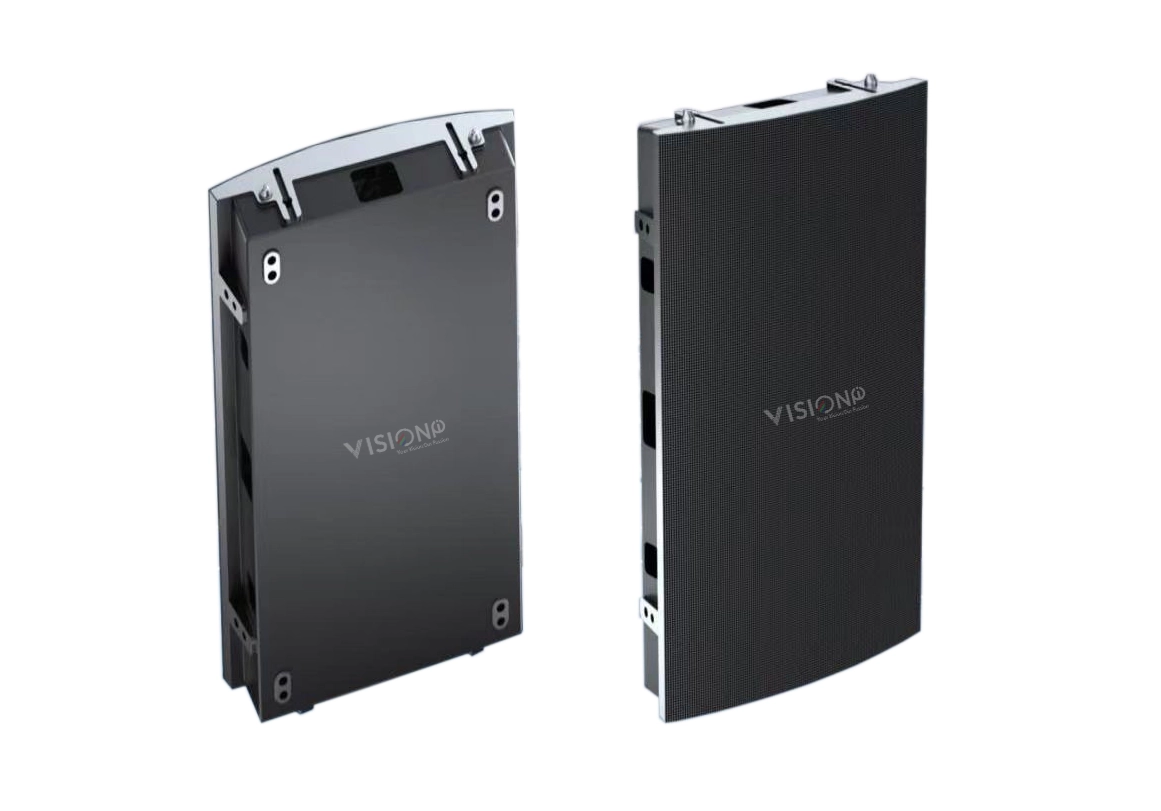
Die-casting Aluminum curve cabinet
Our cylindrical LED display revolutionizes this approach by employing a CNC die-cast aluminum cabinet, which ensures unparalleled precision and uniformity. The die-casting process allows us to achieve a higher level of dimensional accuracy and stability, essential for maintaining perfect flatness in fine-pitch displays. This method not only enhances the structural integrity of the screen but also significantly reduces the potential for pixel misalignment caused by inconsistencies in cabinet dimensions.
Moreover, the use of aluminum offers superior thermal conductivity, which is vital for heat dissipation in high-density LED configurations, thereby extending the lifespan of the display. The robust construction of the die-cast aluminum cabinet also provides enhanced durability and resistance to physical stress, making it an ideal choice for various installation environments.
Incorporating advanced manufacturing techniques and materials, our LED cylindrical screen sets a new standard for precision and performance in the industry, offering a visually stunning, reliable, and long-lasting display solution.
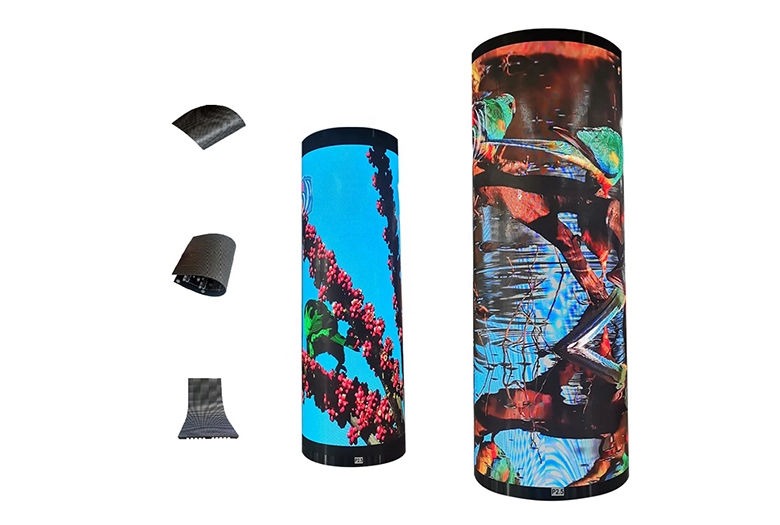
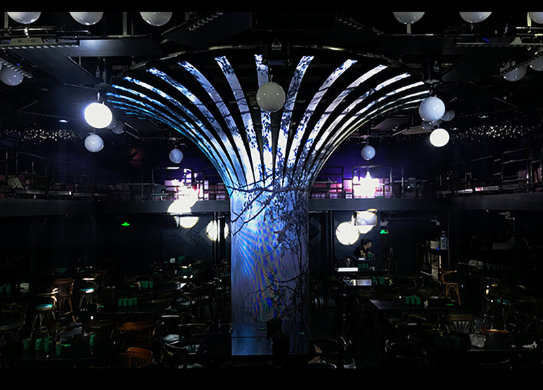
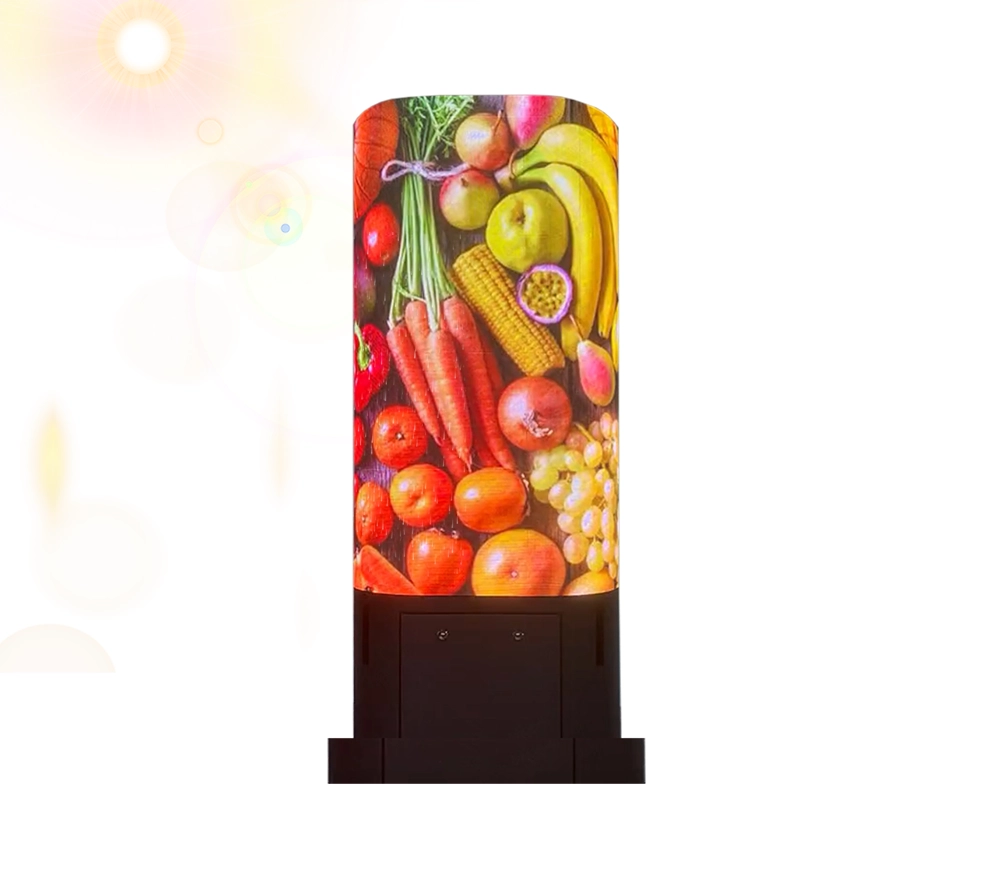
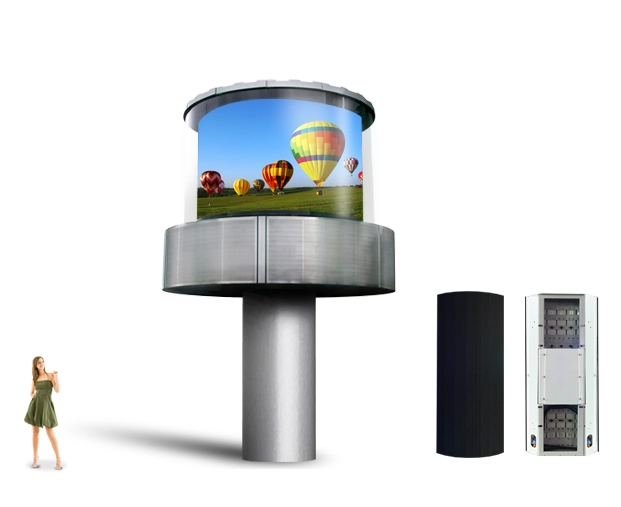
The Cylinder series is a superior transparent LED display that can be custom designed to form a unique cylinder shaped display. The LED modules have up to 70% transparency, which means that they can show content on the screen while allowing the background to be seen.
Customized size is available to be perfect for different screnes.With its unbelievable light weight, you can choose an easy hanging installation. Otherwise you can turn the display into a smart signage with our modern design stand
Since the beginning of the new year in 2021, major upstream raw material manufacturers in the LED display industry have successively issued price increase notices, leading to continuous increases in the purchase cost of LED raw materials (see details). As the upstream price increase surges all the way, the wildfire of price increase still burned to the downstream enterprises of the manufacturing, LED display companies such as Leyard, Unilumin, Absen have also issued price increase notices.
Leyard
On May 14, Leyard released the “Explanation on Global Price Increase of LED Display Products”. Leyard said that because of the increasingly tight supply of major upstream raw materials (semiconductor chips, lamp beads, PCB, etc.) and the significant increase in costs, Leyard, as the world’s largest LED display manufacturer, can still guarantee materials supply. but the increase has also led to a corresponding increase in the production and manufacturing costs of our LED display products.
To ensure R&D investment, product quality improvement and achieve this year’s production and operation goals, Leyard’s production bases will increase the ex-factory prices of products globally from May 17, 2021; it is expected to affect different series of Leyard products The market sales price of the country increased by 3-15%.
Unilumin
It has to be said that the price increase of raw materials is a problem for the entire industry, and fierce competition makes it difficult to pass the cost completely to the end-user.
Hu Yan, Chief Financial Officer of Unilumin Technology Corporation, recently stated on the investor relations interactive platform that the price increase of upstream raw materials is a problem for the whole industry The company will balance the target value and adjust the price of some products appropriately to release part of the pressure.
Absen
Absen said that the company will adjust its sales price to customers based on market competition and company strategy.
In response to the increase in raw material prices, Absen stated at the investor interaction event on May 7 that the company adheres to the core values of “integrity, gratitude, and responsibility”. uses its advantages to strengthen cooperation with upstream suppliers, and obtains strategic upstream suppliers. Support; At the same time, based on capacity forecasts and production planning, strategic stocking of key materials to ensure relatively low-cost material procurement and supply guarantee; In addition, the introduction of new materials, new technologies, and new equipment applications to improve efficiency and reduce overall cost.
How much did the price go up?
Looking back at the origin, the price increase of various upstream raw materials, and the mismatch of various supporting devices and materials, have played a role in promoting the price increase of display products.
Previously, according to statistics from Experts, among the materials involved in display products, chips increased by 15-20%, driver ICs increased by 15-25%, metal materials increased by 30-40%, and PCB boards increased by 10- 20%, RGB devices increase by 4-8%, and display screens increase by 10-15%. (PS: As the price trend continues to rise, the price increase information may be lagging. Please refer to the latest announcements of the current companies.
How shoud we deal with the price increase.
In my opinion, the current price is likely to be the lowest price for a long time in the future. Moreover, as long as the price goes up, it will be difficult to call back, because it is impossible to take back the US dollars issued by USA and the currency issued by other countries.
In addition, the major shipping companies have also joint to raised prices recently, I hope you can make reasonable order & shipping plans.

Smart Traffic Solutions: Why Modern Cities Need Advanced LED Displays
In today’s fast-paced world, efficient traffic management is no longer optional—it’s a necessity. From bustling highways to urban intersections, dynamic LED traffic signs have become the backbone of intelligent transportation systems (ITS). At Visionpi, we specialize in designing durable, high-brightness LED displays that meet the evolving demands of modern infrastructure.
As a trusted traffic LED display manufacturer, we empower cities and transportation authorities to improve road safety, reduce congestion, and deliver real-time information to drivers. Let’s explore how our innovative solutions are redefining traffic management.
Highways: Variable speed limit signs (VSLS) adapt to traffic density, weather, or accidents.
Urban Areas: LED variable message signs (VMS) guide drivers through construction zones or events.
Tunnels & Bridges: High-contrast displays improve safety in low-light conditions.
Smart Cities: Integrate with IoT systems for adaptive traffic control.
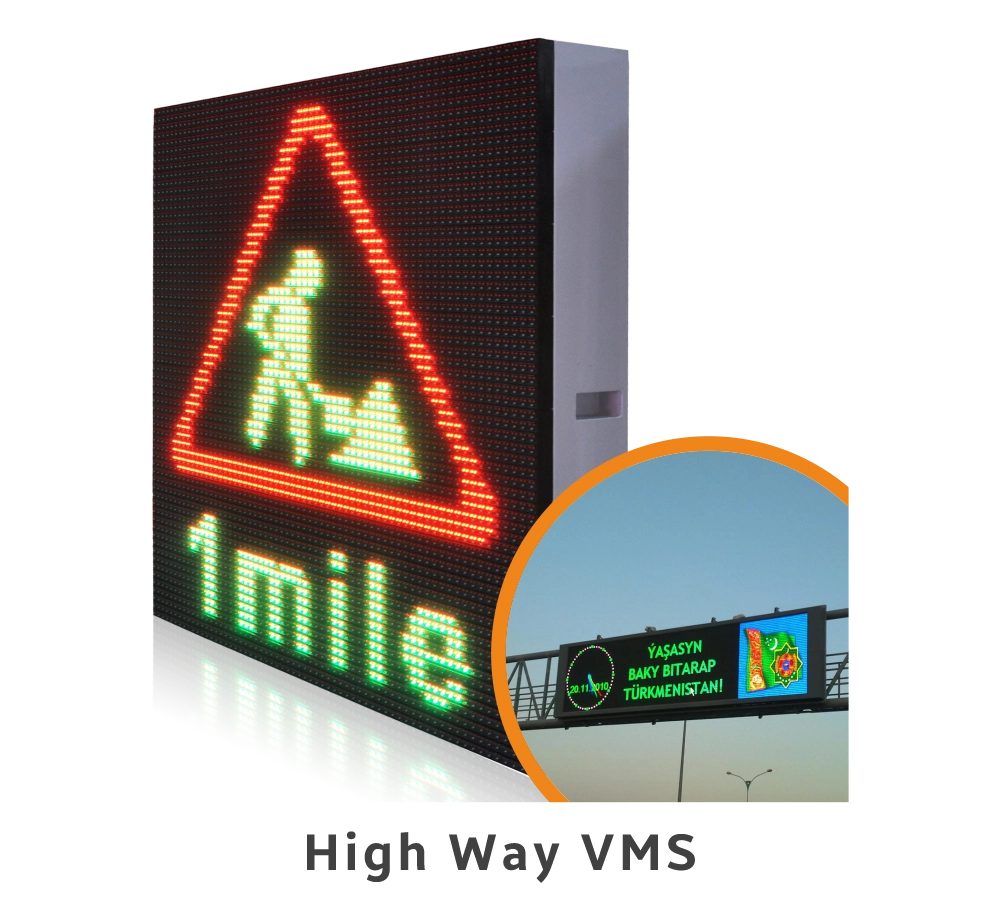
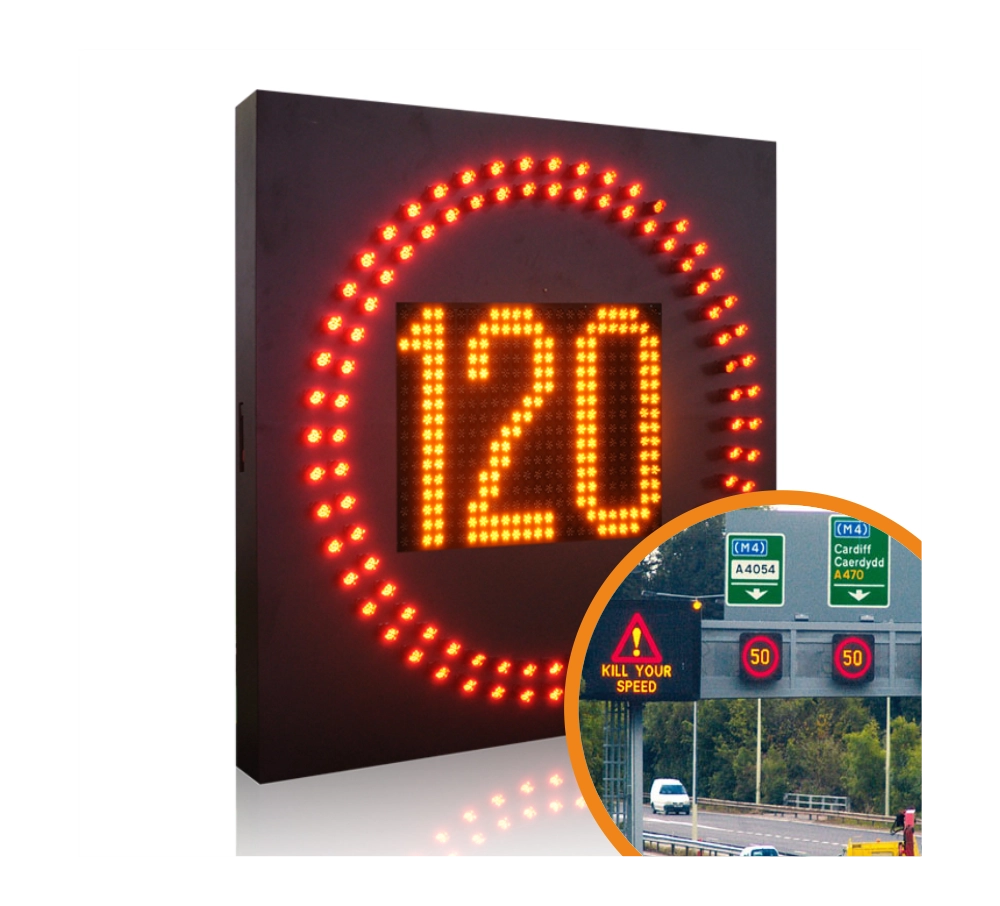
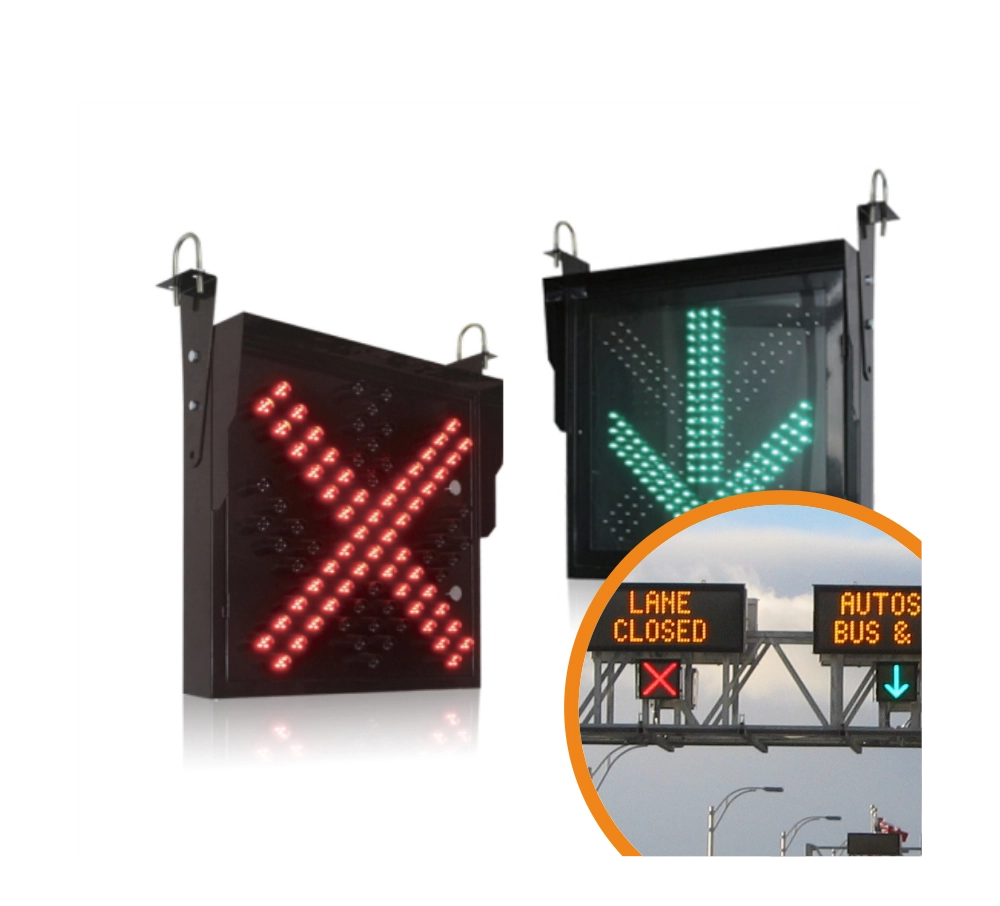
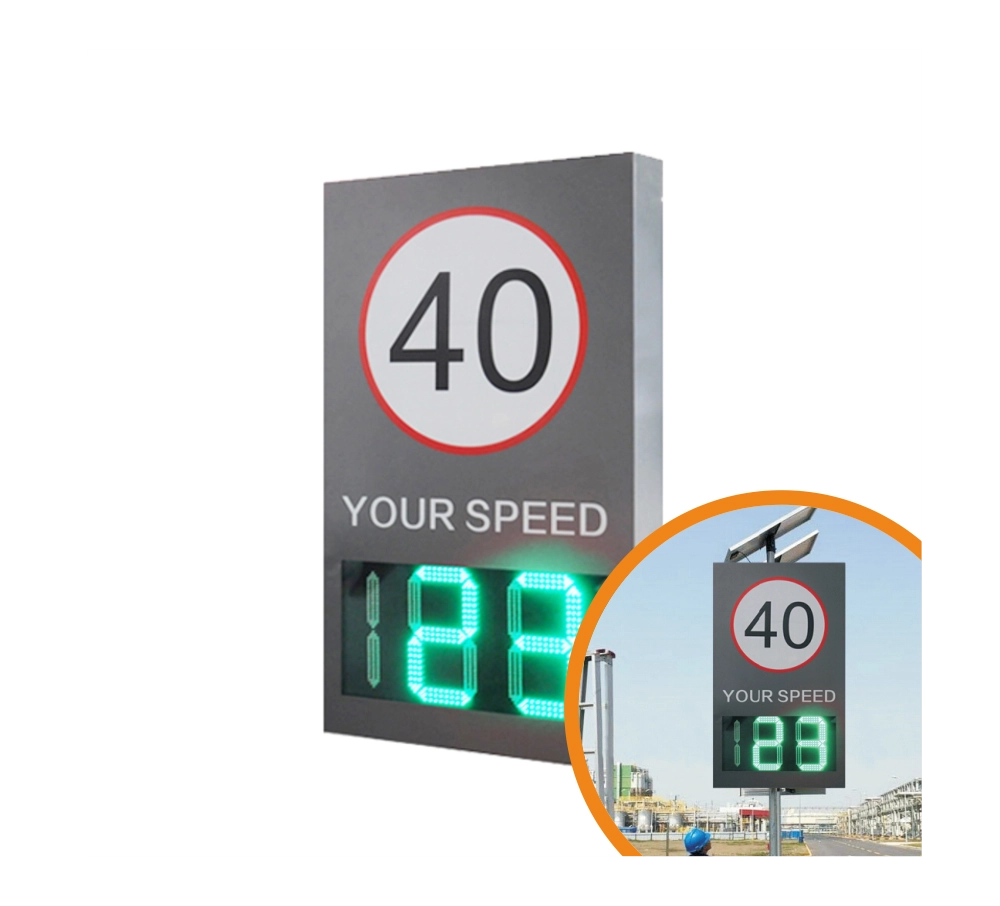
Revolutionizing Road Safety and Information Flow: The Advanced VMS LED Signs
In the ever-evolving world of digital communication, Variable Message Signs (VMS) have become a cornerstone in managing traffic and conveying important information to the public. Today, I’m excited to share insights into the latest advancements in VMS technology, particularly focusing on the state-of-the-art VMS LED signs that are setting new standards in the industry.
10,000 cd/m² Brightness: Ensure crisp readability in direct sunlight or heavy rain.
10,000+ Hours MTTF: Engineered for 24/7 operation with minimal downtime.
Wide Viewing Angles: Optimized for 70°–120° visibility to serve all lanes effectively.
Real-Time Updates: Sync with traffic monitoring systems to display speed limits, alerts, and detours instantly.
Customizable Configurations: Choose from pixel pitches (P16, P20, P31.25, etc.), sizes, and modules to fit any application.
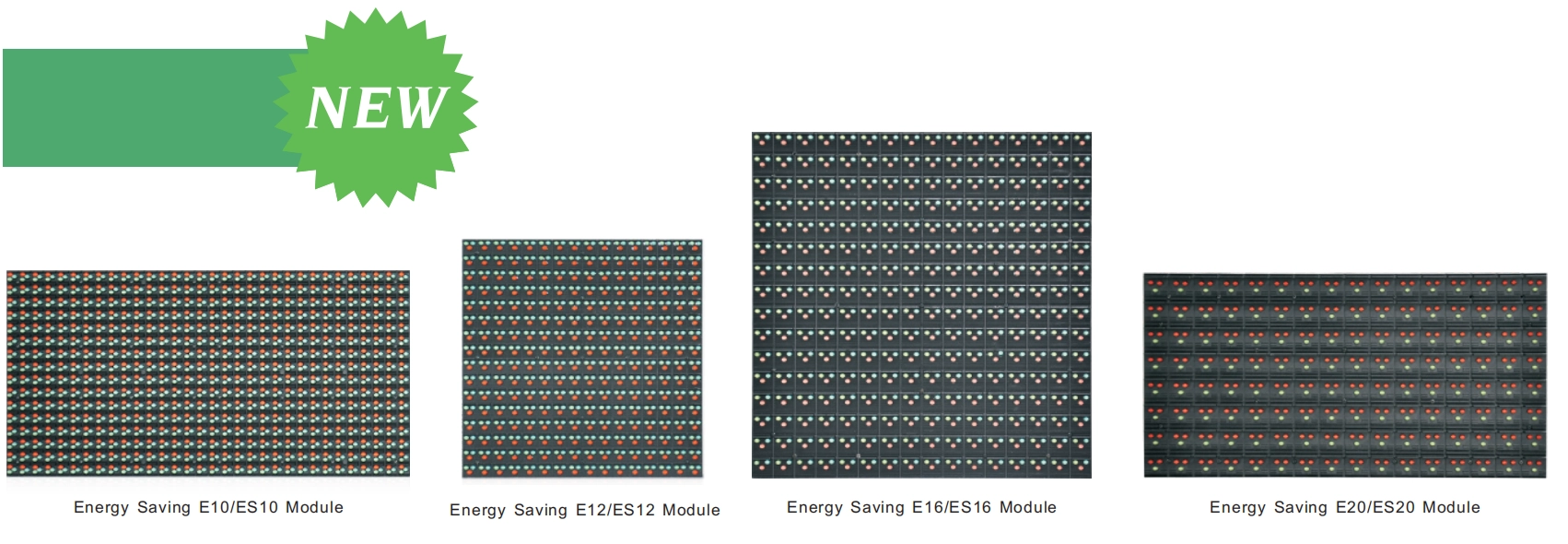
IP67 Certification: Resistant to dust, water, and extreme temperatures (-30°C to 60°C).
Cold-Rolled Steel/Aluminum Cabinets: Built to withstand harsh outdoor environments.
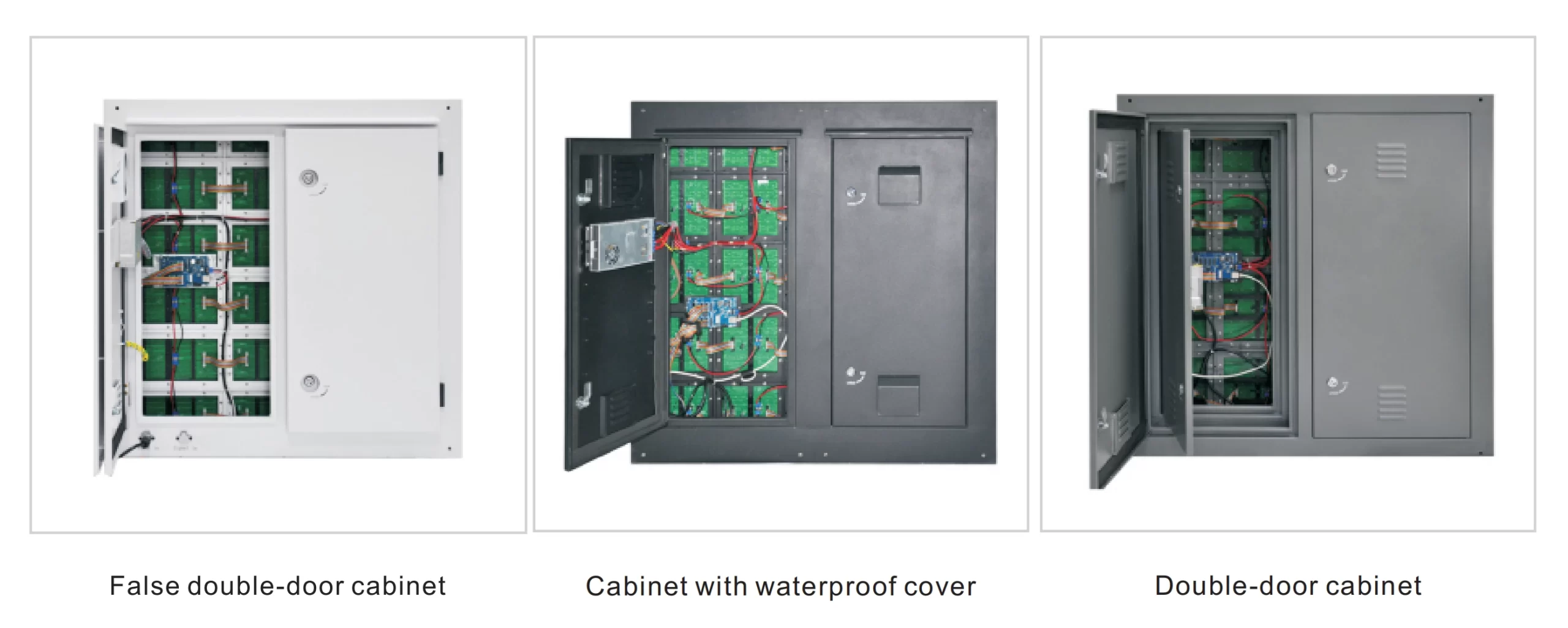
4.Energy Efficiency
Energy-Saving Modes: Reduce power consumption by up to 40% with intelligent brightness adjustment.
Solar-Ready Options: Ideal for remote installations without grid access.
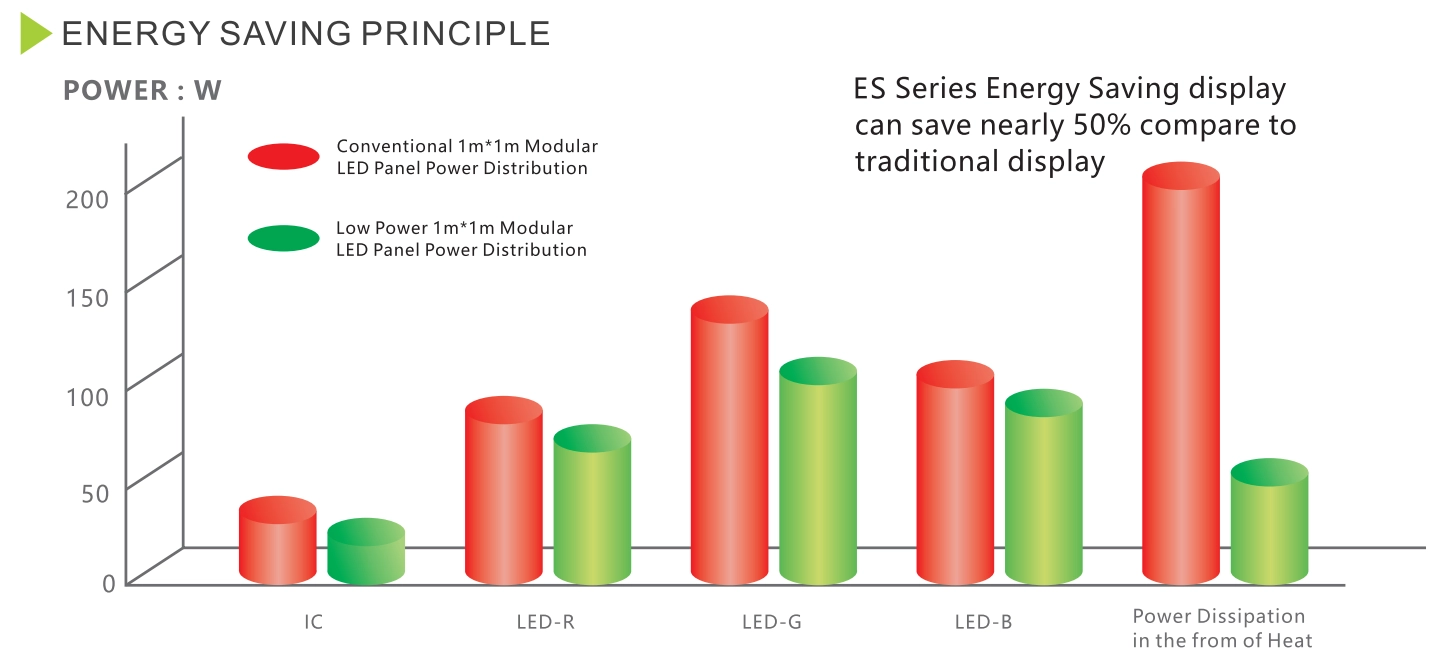



A New Era for Traffic Management and Communication
The advanced features of our VMS LED signs not only enhance road safety but also ensure that traffic information is communicated effectively and reliably. With these enhancements, our VMS signs are ideally suited for a variety of applications, from highways and city roads to events and construction sites. As we continue to innovate, our goal remains clear: to provide sophisticated, reliable, and easy-to-maintain solutions for dynamic traffic management and public communication needs.
In conclusion, the next-generation VMS LED signs are more than just traffic tools; they are integral components of modern infrastructure, designed to meet the high demands of today’s fast-paced world. With their robust construction, versatile functionality, and advanced technological features, these signs are set to transform how we manage traffic and convey information, making roads safer and information flow more efficient.